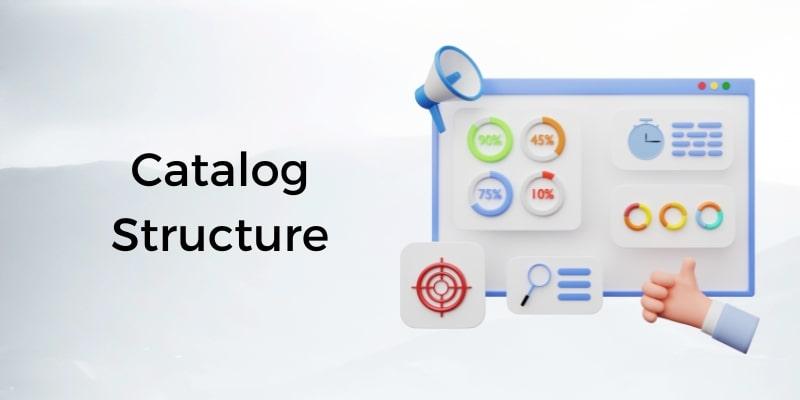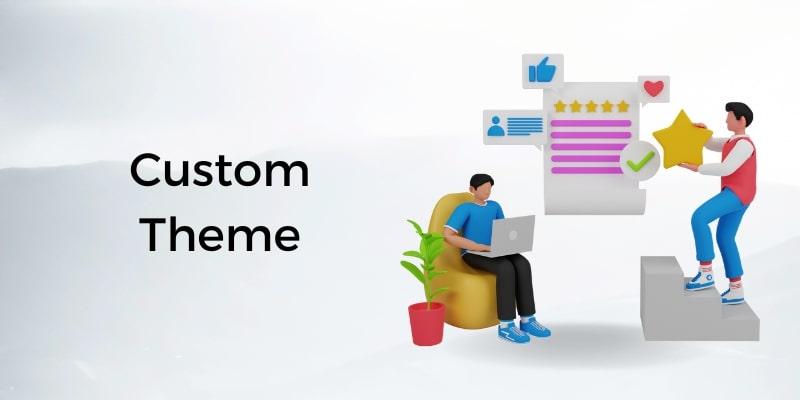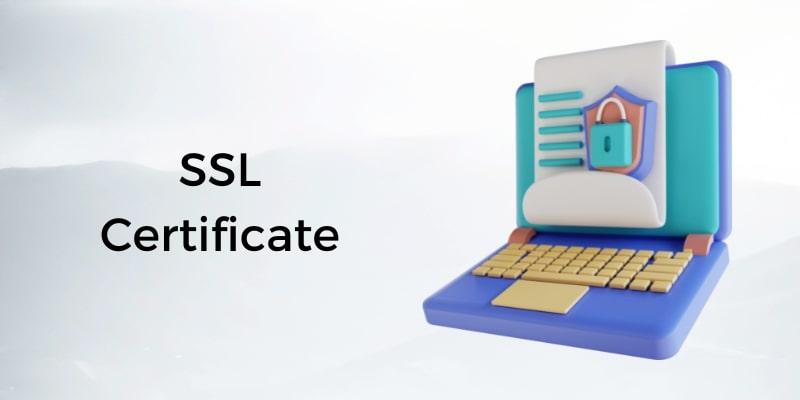14 points to consider for launching an eCommerce store with Adobe Commerce (Magento)
Summer Nguyen | 06-23-2022


The Most Popular Extension Builder for Magento 2
With a big catalog of 224+ extensions for your online store
Launching an Adobe(Magento Commerce) store is not an easy task—it is more than just a website; it is a complex online business in which all business processes must be thoroughly thought out before going digital.
You’d agree if you’ve had any experience migrating a website to a new platform. If not, this article will assist you in considering all of the important elements that comprise successful e-commerce.
Read now!
1) The structure of the website

Magento 2 allows you to manage multiple websites/stores/store views under one installation, all of which are accessible from the same admin panel. These websites and store views may or may not share the same design and settings.
There are two approaches you can take if you want to create multiple language versions of your website. To begin, create a separate domain for each language version. Second, you can keep a single domain while creating multiple store views.
2) Target audience

When creating an e-commerce store, keep the target market and audience in mind. Assume you’re an online seller of organic products. If you want to make a lot of money in this industry, you can provide detailed descriptions of the ingredients, health benefits, manufacturing details, and so on.
People who are interested in these products will carefully read all of the information before making a purchase.
If you’re not sure who you should be pitching to, start by defining the types of people who will benefit the most from your products, whether they’re customers, young adults, or the elderly.
Next, determine their relevant characteristics, such as gender, income, ethnicity, and so on. Learn everything you can about your customers because it will help you determine the tone you want to use while communicating with them.
3) Catalog structure

Each eCommerce website’s structure can be represented by a hierarchical tree.
Customers use the provided site menu to locate the page where they want to buy. Thus, the Site menu should be user-friendly which will save customers time and easily locate goods and services.
Consider carefully how your catalog should look—mindmaps are a great way to plan it. Define which categories are important to you and place them as close to the homepage as possible. Sort goods and services by type and limit each product page to no more than the third level of the menu. Magento developers require this information in order to develop the website, and second, it will influence user experience and thus the conversion rate of the e-commerce store.
4) Hosting

Both Magento Commerce editions include cloud hosting as a platform-as-a-service. This means you can use the software from anywhere. You can also scale and configure it to suit your needs.
When launching a Magento OpenSource store, make sure to look for the best managed cloud hosting. In general, hosting companies offer a variety of services. The most common are as follows:
Shared Hosting:

Because it is shared hosting, it is the most affordable hosting option. This means that your website will be hosted on the same server as several other websites. In this case, the performance of your store will be primarily determined by the number of server resources utilized. You can use this type if you intend to upload hundreds of thousands of products to your store.
Dedicated Server:

If shared hosting is not an option, you can rent a dedicated server. This means you will not be sharing the server with anyone else. You can choose the hardware and operating system that best suit your needs. This option is ideal for growing businesses due to its high security and performance.
Cloud Hosting:

If shared hosting is not an option, you can rent a dedicated server. This means you will not be sharing the server with anyone else. You can choose the hardware and operating system that best suit your needs. This option is ideal for growing businesses due to its high security and performance.
5) Domain Name

Choose a domain name that describes your company; it should be short and memorable. It’s better to get it as soon as possible before someone else comes along and takes it. Choose the domain for which you want to register your website.
There are international domains (.com,.net,.org), country-specific domains (.fr,.us,.uk), and even domains that describe activities (.photography,.shop,.guru).
It is important to note that a domain name is one of Google’s top-ranking factors. Unique names gain SEO advantage, so avoid names that sound similar to existing ones, because the original domain will rank higher anyway.
6) Design
Ready-made Themes

Here are a few things to consider when designing your Magento store:
Magento provides a variety of ready-made themes for you to use when designing your eCommerce store. These themes are available for purchase through the Magento marketplace or a third-party website.
In general, the price of these themes ranges between $30 and $500. However, before purchasing these, make sure you thoroughly evaluate the theme. This is because, most of the time, ready-made themes contain bugs that can harm your site’s SEO and performance.
Also, ensure that the theme you select is responsive enough to work on all devices, regardless of screen size.
Custom Themes

With a custom theme, you can not only make your site stand out but also make your store more recognizable, which is important in the digital world.
Getting customers’ attention is no longer enough. You must persuade them to like your store, remember it, return there, and promote it.
Aside from that, a custom theme offers some technical advantages. It helps your store’s SEO, for example. You can easily meet all of Google’s requirements with clean code. Furthermore, your store will be well organized and scalable. A custom theme also ensures a secure design. There will be no rigidity or bugs.
Compatibility

The greater the number of browsers, the greater the usage. People all over the world use various browsers to access the internet, depending on their language, country, and other factors. Your store should ideally be compatible with all browsers.
However, defining the preferred browsers of the target audience may be difficult, especially if you’re serving globally. If you already have an online store, you can use Google Analytics to see which browsers the majority of your visitors use.
Otherwise, you can take a more practical approach. For example, if you’re targeting an older demographic, chances are they’ll be using Internet Explorer. If you’re targeting customer, you can use browsers that are compatible with the most recent devices, such as Chrome.
7) SSL certificate

The customers enter their credit card details at your store’s checkout page. This information is critical and likely to be hacked. So we need to ensure secure checkouts and a safe customer experience to build trust.
Secure Sockets Layer (SSL), technology helps us to achieve this. Additionally, the site URL indicates if the site is secure or not. The “HTTPS” means secure while only “HTTP” means risky. Also, in the case of the “HTTP” site a warning is prompted to the user
SSL is typically sold for a monthly fee. The most expensive packages include turning the browser bar green to indicate the highest level of security. Internet users nowadays rely on browser warnings. They are very unlikely to purchase anything from an online store that does not use encryption.
8) Editions of Magento 2

Magento currently provides three distinct options. You can download Magento OpenSource for free. There are two paid editions: Commerce Starter and Commerce Pro. The free version includes the majority of the features you’d need for your store. For example, it allows you to create a variety of product types, offer discounts, categorize buyers, and more.
The Magento Commerce Starter includes all of the free features as well as additional paid features like exclusive private sales, reward points, wish lists, and more. It also includes email support from professional Magento developers and Magento cloud hosting.
- Features
Magento 2 comes with a plethora of features right out of the box. If you require something that isn’t included by default in Magento, you can look into extensions. Merchants frequently purchase advanced Magento 2 Layered Navigation to supplement the native one.
In return, adds several useful features, including a filtered dashboard, filter block, horizontal filter bar, and others. Shopping by the brand is another popular feature. It allows your customers to search for products based on brands by including appropriate products in a navigation block.
9) Products

1.Product Categories
Products in Magento 2 are classified into six types: grouped, bundle, virtual, downloadable, configurable, and simple. You must decide which one you will use. Grouped products are made up of a variety of simple products. For example, you could group a camera lens, a tripod, a video camera, and other items to sell.
Bundle products define your customers’ ability to assemble a distinct product by selecting various options, such as a product bouquet, a bike, and so on. Reservations, insurance, and other intangible, preconfigured, and readymade objects are examples of virtual products.
Downloadable products are those used for online software, such as extensions, e-books, MP3 files, and so on. Customers can choose from a variety of features in configurable products. Consider a laptop with various colors and specifications.
Finally, simple products have a single feature. Your customers will be unable to select the size, color, and other attributes of their products.
2.Importing Product Data
If you only have a few hundred products, product data import will not be a problem because it can be done manually. When you have thousands of products, however, the process becomes difficult. But don’t worry! You can import product data in a variety of ways, including:
- CSV Import
CSV is a type of file format where product data can be stored. This works adequately if you wish to shift your product data between the same Magento versions.
- Data Migration Software
These tools are used to transfer data from Magento 1 to Magento 2.
- A Complete Module
This one is used to transfer data from another system to Magento 2. There are numerous ready-made solutions for popular e-commerce platforms. If not, you can even have a custom module built.
10) Pages
Keep the following in mind when designing your eCommerce store’s pages:

- CMS
To build the credibility of your store you need to be transparent with your customers about your services. The product, category, and home page show the basic details while proper dedicated pages giving a detailed view of your privacy policy, return policy, terms, and conditions and other legal information are mandatory.
These are referred to as “CMS pages,” and they can be easily added from the admin panel. Yes, you can create basic pages on your own. You’ll need a professional to make your site more interactive and user-friendly who will not only customize it but also polish it
- Blog
Things are completely different and a little complicated for blogs. eCommerce stores can function without the use of a blog. We all know “content is king”, so a detailed article with lots of graphics is the key to grabbing customers’ attention, also making it SEO friendly. Then, quality content assists people in developing trust in you. So, make sure you do it correctly.
11) Marketing

Magento offers numerous options for managing product marketing and promotion. If you use the OpenSource edition, your customers can add products to a wishlist, zoom the images, send products to friends, see the recently viewed products, get discounts, and more.
The Paid Commerce edition includes advanced features such as sorting the catalog by the most popular products with a single click, having multiple site views for different customers, creating promotions by segment, and much more.
12) Testing

Testing is a critical component of launching a Magento 2 store. As a result, ensure that you thoroughly test each page of the site. Begin by inspecting the site’s design. Examine each page to ensure that all of the elements are properly placed according to the layout.
Then, on each page, double-check all of the buttons and links to ensure they lead to the correct page and are clickable. Do the same for all of the site’s banners. Don’t forget about the search bar. Check that the search button is active and that the input is validating the search.
Check the header, site navigation, cart, checkout process, registration, account, blocks, forms, responsiveness, and other critical elements as well.
13) Speed Optimization

Magento is a resource-intensive platform that requires the proper configurations and resources to function properly. Even if you have a solid infrastructure, your store may be slow at times.
Magento Store Speed Optimization is a critical process for user experience and bounce rate. Here are a few pointers to get you started:
- Choose the best Magento hosting.
- Magento should be updated.
- To accelerate Magento 2, use Redis or Memcached.
- Keep the indexers up to date.
- Continue to examine third-party extensions installed in the store.
- Make Magento flat catalogs available.
- Use the Content Delivery Network (CDN) to improve speed your website.
14) Integrations
When it comes to integrations, here’s what to look for:

CRM Integration
You must decide whether or not to integrate your Magento store with any third-party CRM.
Shipping integration
Magento offers free shipping, flat rate, table rate, FedEx, DHL, and UPS shipping options.
Payment integration
You must specify the method of payment. Adobe Magento Commerce includes a number of default payment methods, including PayPal, Braintree, COD, Money Order, Bank Transfer Payment, Zero Subtotal Checkout, Purchase Order, Authorize.net, and others.
Final Thoughts
Now that you’re ready to sell products on the internet, you’ll need a well-defined and optimized Adobe(Magento Commerce) platform. So, keep all of the important points in mind when doing so.
If you believe you lack adequate technical knowledge, you can seek assistance from Adobe Commerce Agency, and get developer support for your upcoming project. Thank you for reading.



